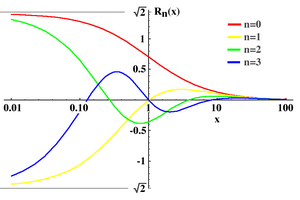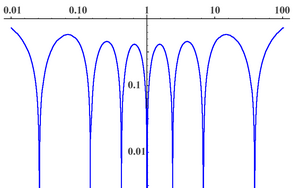Legendre rational functions

In mathematics, the Legendre rational functions are a sequence of orthogonal functions on [0, ∞). They are obtained by composing the Cayley transform with Legendre polynomials.
A rational Legendre function of degree n is defined as:
where is a Legendre polynomial. These functions are eigenfunctions of the singular Sturm–Liouville problem:
with eigenvalues
Properties
Many properties can be derived from the properties of the Legendre polynomials of the first kind. Other properties are unique to the functions themselves.
Recursion
and
Limiting behavior

It can be shown that
and
Orthogonality
where is the Kronecker delta function.
Particular values
References
Zhong-Qing, Wang; Ben-Yu, Guo (2005). "A mixed spectral method for incompressible viscous fluid flow in an infinite strip". Mat. Apl. Comput. 24 (3). doi:10.1590/S0101-82052005000300002.
 |
